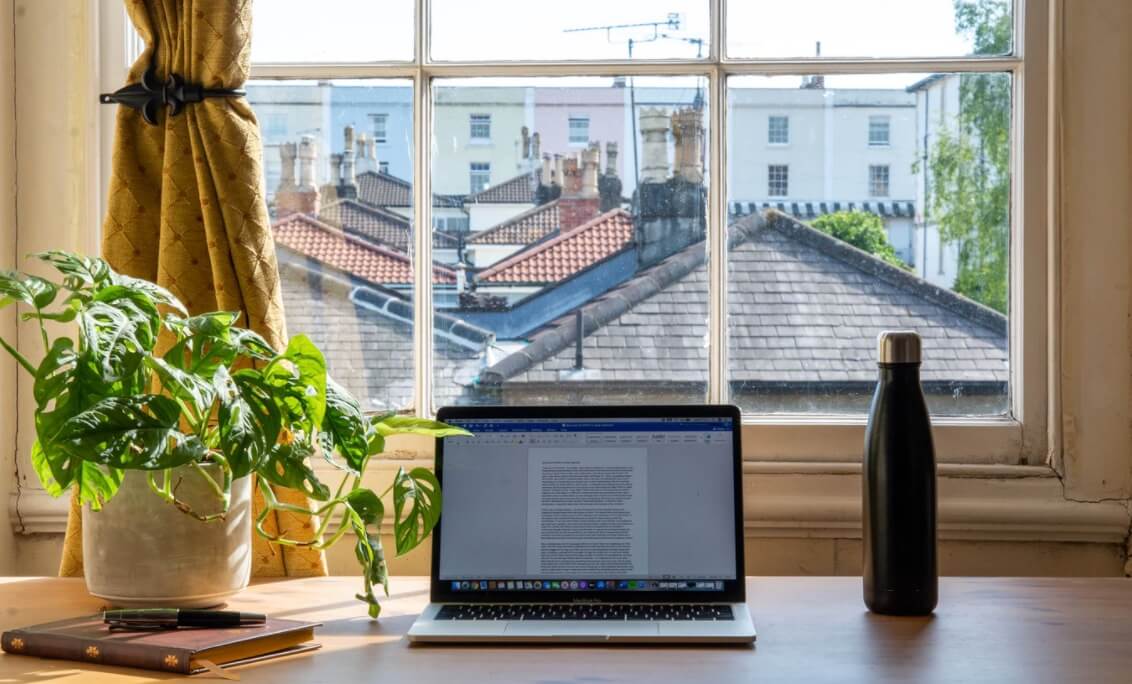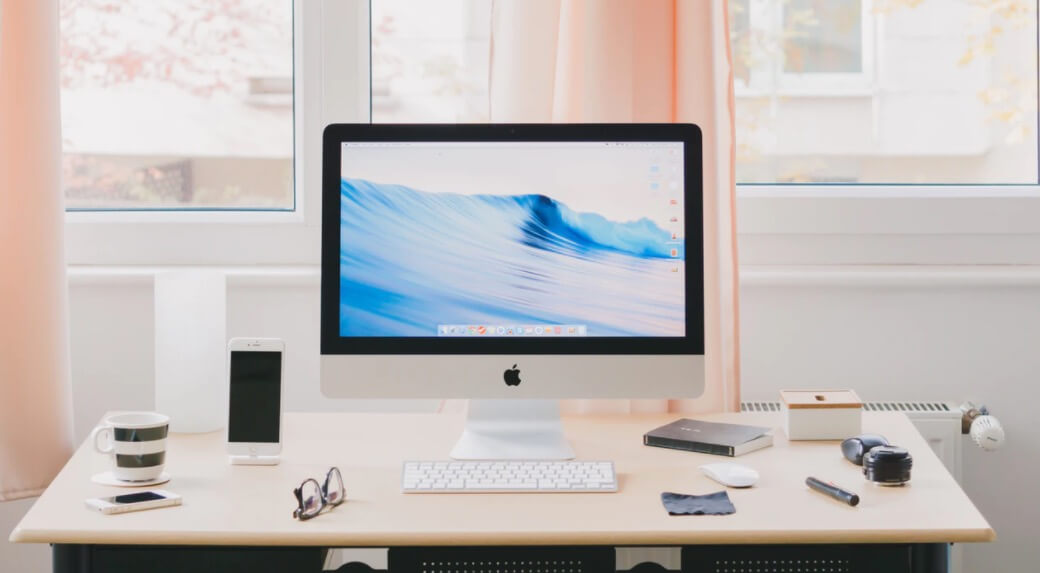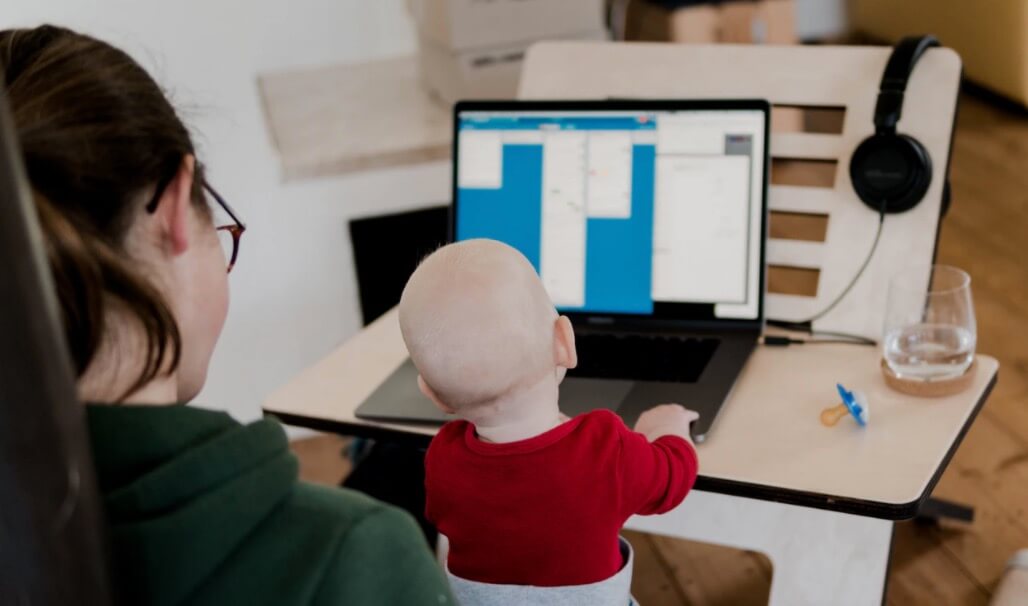The number of people working from home in the United States increased by 159% between 2005 and 2017.
In 2020, something significant happened. The COVID-19 pandemic forced millions of professionals, who were fortunate to retain their jobs, into full-time remote work. Many had little choice in the matter; one day, they worked in an office, and the next, they were at home indefinitely.
Fast forward to 2024, and the landscape of work has evolved considerably. According to recent research from WFHResearch, around 13% of full-time employees continue to work entirely remotely, while 26% have adopted a hybrid model, splitting their time between the office and home. This shift highlights how remote work has become integral to the professional environment post-pandemic.
While there’s no denying the changes you’ll go through shifting to a work-from-home routine, there’s help to be had. Check out my guide to getting a remote job if this is new.
Over time, as you develop suitable systems and habits and implement various innovative tools into your daily routine, you can be more effective, happy, and productive working from home.
How to Be Productive Working from Home (5 Smart Ways)
- Create a Dedicated Workspace
- Turn Off Personal Distractions
- Rely on Technology and Tools
- Take Regular Breaks
- Follow a Schedule
Disclosure: Please note that some of the links below are affiliate links, and at no additional cost to you, I’ll earn a commission. Know that I only recommend products and services I’ve used and stand behind. When you use one of my affiliate links, the company compensates me, which helps me run this blog and keep all of my in-depth content free of charge for readers (like you).
Why is it Difficult to Stay Productive While Working from Home?
The answer to this question naturally depends on various factors that differ from person to person, but we can learn a lot from some common challenges, trends, and habits.

As I’ve mentioned above, a lack of suitable systems, habits, and tools can leave you struggling and searching for answers. Think about it like this—the routine you relied on when working in an office is no longer there to guide your day. You’re starting from scratch if you’ve never worked permanently from home before, which is a big adjustment worthy of proper attention and a thoughtful approach.
Along with fundamental changes to your routine as you’re working from home, you also have to contend with things like:
- A partner or roommate who may also be working from home
- School-age children who require your time (and assistance with homework assignments)
- Small children who require more care
- Distractions around the home (like Netflix and a fully stocked refrigerator)
First, it’s important to remember that you’re not alone in the transition to a work-from-home job. As a result of the COVID-19 pandemic, most of the world has been dealing with the same challenges as we juggle our personal, professional, and financial lives. With all this in mind, it’s time to explore the five best ways to remain productive when working from home.
Let’s dive in!
1. Create a Dedicated Workspace
One of the biggest challenges of working from home is isolating yourself from distractions. That’s one of the many reasons why having a dedicated workspace (ideally not just your kitchen counter, dining table, or couch) is crucial to setting up a productive environment.

As a starting point, it’s naturally the best option if you already have a dedicated office in your home or apartment—but that’s not feasible for everyone. Here are a few of the best places for your home office to take shape:
- Office (the obvious first choice)
- Living room or den (rearranging to create an open corner is highly encouraged)
- Spare bedroom
- Basement or attic
With one of these four options, the goal is to isolate yourself from the rest of your house, where distractions can come more easily. By creating a location used only for “work time” during the week, you’ll also have a dedicated space for your work stuff.
Not everyone has access to a dedicated workspace, though, right? This is particularly true for those forced into working from home without notice this year. But don’t fret. You also have options. Consider making use of spaces like:
- A roomy closet
- A nook in your bedroom
- A table in your dining room or kitchen
In my experience working from home for many years, it’s not ideal to share a space used for another purpose, such as a kitchen or living room, but sometimes you have to work with the options available to you.
Setting up Your Work-from-Home Workspace
When setting up your workspace, regardless of location, keep two things in mind: increasing productivity and minimizing distractions.
Let’s take, for example, someone who has a spare bedroom they can set up as an office. With nothing else in your way (and not many guests coming over to stay for a while), you can set up your desk, computer, and anything else you need without encroaching on other areas of your home or the lives of your family.
Also, since you can close the door to your guest room for a little extra seclusion from the rest of the house, it’s much easier to keep distractions at a minimum. Conversely, if you’re using a shared space to work from home, such as a dining room table or kitchen counter, you’ll have to work a bit harder to remain productive and minimize distractions.
Here are some tactics you can try to help carve out quality work from home time:
- If possible, work at times of day when distractions are at a minimum (like when your children are sleeping)
- Set up your workspace to prevent distractions (like placing your desk against a wall so you can’t see what’s happening around you)
- Share your work schedule with your family so they know when you’re busiest, thus reducing the likelihood of intrusions
One last thing to consider is that people working from home are likelier to overwork than underwork. In other words, it can be difficult to set clear boundaries, so many work-from-home veterans work night and day.
Here’s a telling excerpt from research conducted by the American Psychological Association:
“Teleworkers operating from a home office lack the physical and psychological separation between these two domains that exists in a traditional office setting. On the one hand, family and social obligations can easily bleed over into work hours. But more often, studies show, teleworkers’ professional obligations tend to extend beyond the traditional workday, interrupting family time and preventing teleworkers from ever truly disconnecting.”
If you spend too much time in your dedicated workspace, take a step away to clear your mind. Go for a walk or tend to other responsibilities that can divert your mind from work mode. You don’t want to burn yourself out, and we’ve been learning the importance of self-care year after year.
2. Turn Off Personal Distractions

According to Udemy’s Workplace Distraction Report, 54% of people admitted that distractions hinder them from performing as well as they should while working.
While working from home, it’s hard not to fall into this category. However, with a dedicated workspace to call your own, you’re doing your part in maintaining an environment designed for productivity and efficiency throughout your day—whether you’ve started a blog and are working for yourself or holding down a (now) remote job.
However, even if you have a dedicated workspace and strict schedule, there’s no guarantee that you’ll remain on the straight and narrow. If you don’t have the discipline (and systems in place) to avoid distractions, they’ll continually bog you down.
The best thing you can do is approach your work as you would in a traditional office setting. This doesn’t mean you’ll never fall prey to distractions, but getting in the right frame of mind and setting up your environment to reinforce staying productive is half the battle.
Some of the most common personal distractions when working from home include:
- Technology (like family and friends texting, calling or emailing you)
- Television and radio
- Your spouse, roommate, or children
- Visits from people you know (such as friends and neighbors)
As you settle into your work-from-home groove, don’t lose sight of the benefits of this flexible working arrangement. If your children need help with their homework, find time in your day to help them out. If your elderly parents need you to drop off groceries twice a week, try to fit it into your schedule.
It’s more than okay—most employers encourage it—to find a happy medium between personal and work responsibilities as long as you and your team are satisfied with your output level.
3. Rely on Technology and Tools
Depending on your age, you may remember the days before email, when the Internet and text messages ruled everything around us. Back then, technology meant something entirely different—sharing documents via fax and lugging around a cell phone that would make Zack Morris jealous.
Fortunately, those days have passed, as we now have access to beneficial technology that helps improve productivity and communication when working remotely.
For starters, here are five productivity-enhancing tools you should be using to better communicate with co-workers, clients, and prospects in our new work-from-home universe:
- Zoom: With Zoom, video conferencing, web conferencing, and webinars have never been easier. Not only is it simple to set up, but it comes with all the features you need to have clear and productive conversations with anyone, regardless of location.
- Loom: As a screen and video recording software, you can quickly create videos to ensure more efficient communication. Not to mention the fact that it’ll also impress people in your network.
- Slack: With Slack, you never have to worry about staying in touch with your team. You can send messages, share files, make voice calls, and more from your computer.
- Google Drive: You may not consider it a conventional communication tool, but it’s essential to many work-at-home professionals. With Drive, you can access collaborative Google Docs, Sheets, and Slides. You can also chat with those who have access to your files.
- Troop Messenger: This one is more than an instant messaging application. You can also conduct video calls, share your screen, and start a group chat (plus a lot more), all in a highly secure environment designed to function particularly well for companies that have an increased need for security or client confidentiality.
Now that you know how to communicate, let’s take a look at some of the tools you can use to manage your projects more effectively from home:
- Trello: Trello is a flexible, easy-to-use project management tool that allows you to keep track of everything, down to every last detail.
- Asana: Asana was built to solve the problem of managing work, tasks, and projects for distributed teams.
- Basecamp: A long-time favorite of work-from-home professionals, Basecamp “puts everything you need to get work done in one place.”
- Monday: When your workflow needs help, Monday can come to the rescue. You can shape your workflow to meet the needs of you and your team, all while taking advantage of one of the most visually appealing organizational tools.
No matter the challenge you’re facing as a new work-from-home professional, there’s likely to be some type of technology or tool that can ease your pain. Spend a little time searching around on Google for tools that’ll accomplish what you need—or join some remote work communities on Facebook and ask for advice from those who’ve been in the game longer.
While there are hundreds of online tools designed for remote communication, there’s truly no replacement for face-to-face communication. So, even if you do work from home now, I recommend trying your best to meet up outdoors with co-workers or clients in-person (at a distance, with masks on and when it’s safe to do so according to CDC & local guidelines, of course).
4. Take Regular Breaks
It’s easy to fall into the trap of believing that the more hours you work in a given day or week, the more productive you are. This general assumption makes sense on the surface, but as you dig deeper, you may realize that it’s working against both your own productivity and health.

Regular breaks throughout your day aren’t a waste of time. In fact, when incorporated into your schedule well, a quick step away from the computer (or outside of the house) is a great way to be productive working from home.
In addition to increased productivity levels, here are a few additional benefits of taking regular breaks away from your work:
- Enhanced mental well-being: Stress is a serious concern among all workers, especially those who don’t take enough time away from their jobs. Even a short break, such as 30 minutes for lunch or a quick walk in the sunshine, can recharge your mind, improve your mental well-being, and help you perform at a higher level when you return to your desk.
- Easier to practice healthy habits during the workday: It’s unhealthy to stay cooped up in your office for hours, doing nothing more than staring at a computer screen. Regular breaks give you more time for healthy habits, such as eating a balanced diet, exercising, getting some fresh air, connecting with friends (even if virtually), and clearing your mind.
- Creative thinking: There’s nothing wrong with working long and hard when you’re “in the zone,” but this can impact your ability to think creatively over the long term. When you’re immersed in one project and one way of thinking for an extended period, there’s no time for your creativity to shine through. However, regular breaks give you time to develop new ideas.
Here’s a fascinating insight to chew on (courtesy of Lifehack):
Did you know even a 30-second micro-break can increase your productivity by up to 13%? Or can a 15-second break from staring at your computer screen every ten minutes reduce your fatigue by 50%?
In other words, you don’t need to step away from your desk for hours. Even if you only have 15 seconds—which shouldn’t be too difficult to carve out—you can take a break to improve your productivity, health, and mental alertness significantly.
Even if you understand the benefits of taking regular breaks, it can be a challenge to fit them into your day. This is particularly true when your to-do list is overwhelming. The key to making this work is setting a work (and break) schedule on your calendar and sticking to it.
One of the most popular approaches is the Pomodoro Technique. In short, this technique positions you to work in small bursts. Here’s how it operates:
- Set a timer on your computer or smartphone for 25 minutes
- After 25 minutes is up, take a five-minute break (grab a healthy snack, stretch your legs, rest your eyes)
- Complete four Pomodoro sessions for a total of 100 minutes of work and 15 minutes of rest
- After your fourth session, take a more extended break of 30 to 45 minutes to recharge fully
It may be a drastic change from what you’re used to, but the Pomodoro Technique allows you to schedule breaks to recharge your mind and body.
5. Follow a Schedule
It doesn’t matter if you call it a schedule, routine, or something else entirely; it’s critical to have a schedule you follow to be productive while working from home.

In a perfect world, you’d be able to keep a similar schedule day after day, which would allow you to settle into a groove. But when working from home, this is often much easier said than done (thanks to the many more distractions that come with working at home).
When organizing your schedule for maximum productivity during work hours, think beyond just the time you spend at the computer. You should consider your routine from the moment you wake up in the morning until the moment your head hits your pillow.
According to Northwestern Medicine, people without a routine often suffer from the following:
- Poor sleep: Without a daily routine, you’ll wake up and sleep at different times daily. Doing this occasionally is okay, but a sleep routine can transform your life. Check out this article for a better idea of how much sleep you need.
- Stress: Without a routine, you can’t adequately prepare for your day. And when you don’t prepare, you never know what’s coming next. With a routine, you won’t constantly worry about your schedule and how you’ll get everything done.
- Bad health habits: From eating poorly to neglecting regular exercise, living without a routine can result in dismal health habits. The farther you go down this path, the greater its impact on your life.
As you work on developing a winning schedule, keep the following factors top of mind:
- Your typical workload on a given day
- The time of the day when you’re personally the most productive
- The average routines of your spouse and children (if applicable)
For example, you may be the type of person who likes to rise early and get to work. This is when you’re most productive. In this case, you’ll want to pack as much work as possible into the morning hours of your day so that your afternoons can be dedicated to less cognitively intense tasks (or more self-care-oriented time).
Conversely, if you work better in the evenings, you can leave the lion’s share of your work until after dinner or put the kids to bed.
Here’s an example of a morning routine that might work well for my fellow early risers:
- 6:00 am: Wake up, go for a walk or workout, and take a shower
- 7:30 am: Eat a well-balanced breakfast
- 8:00 am: Begin work (following the Pomodoro Technique or another routine that works for you)
- 12:00 pm: Break for lunch (no doubt, making my favorite vegan açaí bowl recipe) and a walk outdoors
The time intervals should change to suit your schedule and any unique time commitments you have, but this should give a basic understanding of how to approach a productive start to your morning hours while working from home. Check out this video from Marie Forleo for some tips on creating a new work-from-home schedule for yourself if you’re looking for more inspiration.
Final Takeaways: How to Be Productive Working From Home in 2024

Even those with extensive experience working from home often struggle with maintaining productivity over long periods, myself included.
Understand that the goal shouldn’t be perfection but achieving genuine productivity daily. Striving for perfect productivity every hour isn’t reasonable or human. So, set realistic expectations, especially considering the myriad challenges in the world and your personal life.
Fortunately, following these best practices will equip you with the tools and systems to remain productive and efficient while working from home. Check out these additional tips for even more ways to boost your at-home work productivity.
With the COVID-19 pandemic now over, work dynamics have changed significantly. While many will return to their offices, some will continue to work remotely as more companies recognize the benefits of remote work. If you continue to work from home, you can rely on and build upon this productivity advice for years.


Thank you. Very very nice blog. And I have a tiny blogging website too, which is so small in comparison to yours. Can you suggest something to grow more?
You’re welcome, Rashmi! Check out my guides about growing your blog audience over here: https://www.ryrob.com/blogging/
Wow what a fantastic article. Working from home is without doubt stressful and taxing. Key takeaway for me is the Pomodoro technique, which I personally try to follow. Believe you me, it is easier said than done. Well Ryan kudos to you for giving so much of insight for Working from home professionals. Thanks a ton.
Yes, I totally agree! I’m not able to slip into the mindset I need for adhering to the pomodoro technique every day, but I find it super useful as a tool to structure my time on days that I’m immersed in writing for a period of a few hours. It’s not as effective for me on the days/times when I’m task-switching between email, calls, etc. Glad to hear you’re experimenting with it too! I find it’s not as much about attaining perfection with any of these things, as it’s about having positive habits that tend to move you forward in the right direction at the end of the day 🙂
I found myself some of the suggestions practicing already but nevertheless I have got to learn so many new and valuable suggestions for improvement in my work. Great job!
That’s great to hear, Dipak! Keep it up 👏
Very nice and detailed blog and much needed blog for the current days
Thanks for sharing, Amol!
Another great article, I enjoy reading from this site. Thanks a lot Ryan.
Of course! You’re welcome 🙂
Ryan, great post and very timely also! When it comes to working remotely, I can totally relate to just about every aspect of your article. I was already working about 50% remote prior to the pandemic and now, of course, 100%.
That said, the biggest change for me (post COVID) has been the challenge of separating work hours from my personal time. At 50%, it’s not as pronounced, but now it has all become blurred!
I believe it’s particularly hard on those of who are still employees, have a boss and have little control over our schedules.
I know that physical, emotional and mental health have also been issues for many. I will say that I took advantage of my situation. The time that I used to allocate for commuting has now been devoted to exercising, and it has paid off. I would highly recommend this to everyone.
Of course, that’s why I’m here and working on launching a successful blog so that 3-5 years from now, I have greater control of my life!
Thanks!
Whew, I really applaud you for the amount of work it sounds like you’ve been putting in on yourself! And you’re right… making time for self-care has been more important than ever, even if it’s something as simple as getting out of the house for a walk, 20min of exercise, calling a friend to catch up, these things have all become much more meaningful (even to someone that was working remotely before the pandemic). Here’s to a brighter future!
👍👍👍
Very helpful blog for working from home.
Glad to hear that, Abdul!
As freelancer, I used to work from home even before the pandemic era. After reading your blog now feeling importance of point No 4. About taking break. Most important: regularly.
More than hundred days long downtime we missed to follow this rule. Now the situation is moving toward normal. Hope, in coming months we will plan weeklong journey. Thanks Ryan sir for caring tips.
You’re welcome! Self care is very important these days, even something as simple as a 10-20 minute walk outside in the middle of your day can make a big difference in the quality of work you’re able to deliver as a result of clearing your mind & moving your body a bit. Glad you’re doing as well as can be right now 🙂
Hi Ryan, a great article on getting s…t done!
Working from home can be challenging for sure. I have a tendency to set my expectations to high and get upset when I’m less productive as expected. Even I try to plan ahead and be smart about how to work I have not been able to find a strategy that really works for me, except putting in long hours. However most of the time I follow more or less accurately the Pomodoro technique, even though it can be difficult for me to take breaks. Sometimes I feel I stand in my own way, and yet still make it work…
Thanks for the kind words, Wilfried! Always a pleasure seeing you here and I appreciate the really thoughtful reply here too. I think you’re right (in my experience as well) that aiming for adherence to systems that work for us is the goal… not perfection at all times, but rather to be constantly moving in the right direction on the whole. Keep on keeping on 🙏
I found my greatest passion and a great platform to express that in 2020 thanks to your blog. Unfortunately, with a string of bad luck a bit of burnout, I found myself crashing and burning. I finally found the courage to start up again and this post must be God sent.
This post will help me with a healthy and productive restart on my journey as a blogger and writer.
I enjoy learning from your blog and attribute my learning curve to the informative material you provide. Your Built to Blog course and ebook, The Habits of Highly Successful Bloggers, are worthwhile purchases. Thank you for your continuous output of knowledgeable and useful information.
Ah, I feel for you man. It’s great to see you back here, first of all… and whew, I feel like I can even sense a difference in your energy through this comment, I’m pumped to see what comes out of your blog here soon as you begin ramping back up. Mind shooting me an email with your next post once it goes up? I’d love to check it out—and thank you very much for the kind words about my course & book, that means a lot 🙏
Thanks so much for the article. Though I am new here, I enjoy the lessons. Before joining you here blogging has been my desire for a long time now but not really knowing the best way to get started. But I think there is about to be an answer to prayer now since I got you. I look forward to getting more insight on how I can get started on creating my own blog this 2021. Thanks for the hard work.
Love hearing that, PK! Keep up the great work down this path, my friend 🙏
Hi I love your guidelines this is truly helpful for me. So thankful for all of your shared wisdom. Hoping for more🥰
So glad to hear that, Kandy! Stay tuned for more 🙂
Dear Sir
I have read this article about working form home so I decided to act upon the direction that you have given in this article slowly point by point and tried to work as you directed please help me to tell about fields which are useful to me and I can get work easily from freelancing sights and what expertise I get which are suitable for wok. at last Thank you for this interesting article for us who live in third world countries I am from Pakistan.
Regards
faheem
That’s great to hear so far, Faheem! Wishing you luck in your search for solid freelance work—have you checked out these articles on my blog?
https://www.ryrob.com/freelance-jobs/
https://www.ryrob.com/remote-jobs-websites/
Organizing your day with minimizing minimize distractions is the perfect solution to be productive while working at home.
Absolutely! 🙏
The office is getting saved, but it’s not going back to the way we knew it. What does the change look like? We talked to the experts and researched.
Thank you Aaron, very cool!
The infrastructure is in place. Then why are employees not willing to return to the office? Understand the pulse of your workforce and design your company’s return mission.
🙏
Tools are very helpful, I agree with you.
Glad to hear that, Rachel!
I find the tools explored here extremely helpful. The tips are something else. Pure gold. Keep it up sir.
Glad to hear it! 🙂